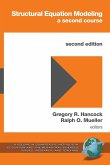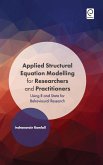This volume is the second edition of Hancock and Mueller's highly-successful 2006 volume, with all of the original chapters updated as well as four new chapters. The second edition, like the first, is intended to serve as a didactically-oriented resource for graduate students and research professionals, covering a broad range of advanced topics often not discussed in introductory courses on structural equation modeling (SEM). Such topics are important in furthering the understanding of foundations and assumptions underlying SEM as well as in exploring SEM, as a potential tool to address new types of research questions that might not have arisen during a first course. Chapters focus on the clear explanation and application of topics, rather than on analytical derivations, and contain materials from popular SEM software. "This book represents a significant updating and expansion of Hancock and Mueller's excellent first edition that explores a variety of topics not typically covered in introductory SEM courses. The second edition is again characterized by the substantial strengths of the original text including a clearly articulated didactic presentation style and a cohesive voice that connects each chapter to the next. This revised edition not only incorporates comprehensive updates to the original material but also includes the addition of a number of wholly new chapters covering important and contemporary topics including partial least squares estimation, conditional process modeling, exploratory SEM, and Bayesian estimation. Taken together, this is an indispensable resource for both beginner and advanced users of SEM across the social and behavioral sciences; I recommend it highly." -- Patrick J. Curran, University of North Carolina at Chapel Hill








